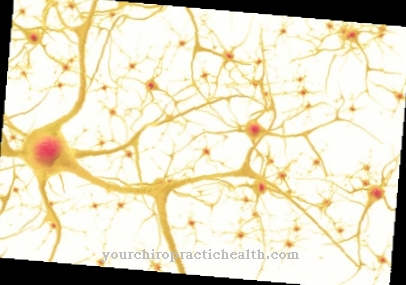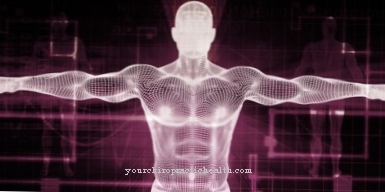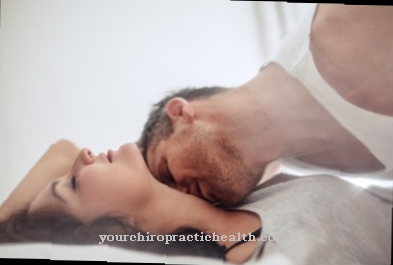The canines and incisors of the human dentition are known as the front teeth. If the inclination of the tooth axis of the upper front teeth has a mirror-image symmetrical center line, the result is an aesthetic and harmonious tooth appearance. The technical language speaks of one Anterior guidancewhen the canines and incisors serve as guides when biting.
What is the anterior guidance?

Since the canines and incisors are front teeth, front and Canine guidance often used synonymously. In order to produce a perfect tooth appearance, the front teeth in particular must be evenly arranged and have a healthy white, yellowish color. The area around the mouth, teeth and gums must match the face and harmonize with the human appearance.
The front six teeth of the upper and lower row of teeth in the anterior region are called the front teeth. In contrast to the posterior teeth, they have no occlusal surfaces. The term anterior region describes the anterior teeth of the dentition and the anterior region. This includes the front teeth that are visible when speaking.
A well-functioning anterior or canine tooth guidance as well as a healthy chewing function are the most important prerequisites for healthy teeth.
Function & task
The anterior guidance is a dynamic occlusion. This consists of the occlusal surfaces between the front teeth in the lower jaw and the front teeth in the upper jaw. The medical definition of occlusion means "contact between the teeth of both jaws". Further terms for the anterior guidance are Incisal guide and Incisor guidance.
If the lower jaw moves, there is only contact with the canines and cutting teeth of the upper and lower jaw. Dentists speak of incisal guidance when the lower front teeth slide past the palatal (palatal) tooth surfaces of the upper front teeth. The term "incisal" describes a position or direction designation. Dentistry refers to a designation of the area of the teeth. The incisal point is the mesial (the part of the teeth facing the center of the dental arch) contact point at which the cutting edges of the centrally arranged cutting teeth of the lower jaw touch.
The anterior guidance is an antagonistic contact between the canines and incisors when the lower jaw moves. During the chewing process, the rows of teeth of the upper and lower jaw meet briefly to break up the food ingested. Synergist (supporting muscle of the agonist), agonist (muscle inhibited by the opponent) and antagonist (opponent) perform complex movements through their interaction.
When guiding the cutting teeth, the cutting edges of the lower incisors slide along the surfaces of the mouth towards the mouth. There is an opening movement of the lower jaw in the upper incisors. Feeding movements transmit the bite pressure via the front teeth, with sideways movements via the canines. This canine guidance shows how important the canines are.
Occlusion occurs when there is closure or contact between the rows of teeth in the upper and lower row of jaws. The occlusal surface forms the chewing surface that is in contact with the opposing tooth.
You can find your medication here
➔ Toothache medicationIllnesses & ailments
Disturbances can occur in the anterior and canine guidance. Myoarthropathy is an occlusion or bite disorder of the masticatory muscles and the temporomandibular joints. Arthropathy occurs when the temporomandibular joint is disturbed and myopathy occurs when the masticatory muscles are disturbed.
In addition to the classic interdisciplinary factors, dentistry describes these occlusal disorders as "occlusal interferences", which occur both centrically and eccentrically and can trigger a dislocation of the physiologically ideal temporomandibular joint position. These disorders, which are due to incorrect contact between the individual teeth, are referred to in dentistry as craniomandibular dysfunction (CMD).
The complex, three-dimensional movement system of the temporomandibular joint can, in the event of disorders, result in a multitude of different complaints that are not limited to the jaw area alone. The human chewing apparatus only functions properly if there is a harmonious coordination between the structures of the temporomandibular joint and the teeth.
In the case of the anterior guidance, the interlocking of the lower and upper jaw is optimal, the temporomandibular joints are centered and the masticatory muscles relax in the resting position. If there are disruptions to this optimal overall picture, reinforced masticatory muscles, worn and shortened teeth with ground cutting edges in the anterior region and missing canine tips lead to a clear finding that forms the basis for the subsequent therapy. The aim is a trouble-free occlusion with an optimal bite position.
Faults can also be caused by defective dental implants and dentures such as crowns and bridges (interdisciplinary disorders).Non-occlusal disorders such as stress, orthopedic problems, posture and trauma can also lead to discomfort in the jaw area. These disorders form the basis for non-physiological activation and tensioning of the muscles and are also classified as CMD (craniomandibular dysfunction).
The interdisciplinary and occlusal areas play an important role in etiology. Using the functional diagnostics, a brief finding is first carried out in the form of a screening using an examination sheet. If the presence of craniomandibular dysfunction is confirmed, a clinical functional analysis is carried out. This functional status may be supplemented by an imaging, instrumental or consular examination. The aim is to restore a fault-free occlusion and a perfectly functioning anterior or canine guidance.
After the therapy, the anterior and posterior teeth show a neutral assignment in accordance with the centric condylar position (articular process) and a harmonious assignment to the skeletal bases, for example with an occlusal splint. The equilibration splint ensures an even bite in all supporting areas of the anterior and canine guidance. It enables even and moderate contacts without leaving the affected teeth free to move.
With all excursion movements of the lower jaw, the disclusion (loss of occlusion, loss of contact) of all antagonists (opposite tooth, opponent of the opposite jaw) sets in spontaneously. Occlusal interference and elongations (lengthening) of missing antagonists are prevented and the occlusion and muscles are harmonized and relaxed. New movement patterns of the jaw are programmed and mandibular compulsions and parafunctions are eliminated. The physiological condylar position is set and secured.



.jpg)








.jpg)



.jpg)










.jpg)
